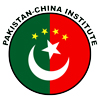Pakistan, China FTA Posts Impressive Results
Source : Pakistan Observer Date : 19-04-2015
 |
|
|
Islamabad—The Free Trade Agreement (FTA) signed between Pakistan and China has shown positive results as the bilateral trade volume increased from around $ 6 billion in 2006 to $ 16 billion in 2014. The China-Pakistan Free Trade Agreement (CPFTA), which was inked in 2006 and enforced in 2007, brought maximum opportunities for businessmen and consumers of the two countries.
Pakistan was the first developing country, which signed the FTA with its time-tested friend to boost its economy. The agreement comprehensively covers trade in goods and services along with investments. Currently the balance of trade was in favour of China but efforts are being made to increase exports and decrease imports from that country, said sources in the Ministry of Commerce. The sources said negotiations between the two countries were continuing regarding the second phase of CPFTA. Four meetings had already been held in that regard.
Under this phase, the agreement would not cover matters on reciprocal basis rather Pakistan would get more incentives than China, they added. The sources said the two sides were focusing on more incentives for Pakistan to make up the losses it suffered due to dumping of cheap Chinese products in its markets. During the last round of talks, Pakistan suggested to reduce duties to zero on not more than 50 percent of products immediately which was less than 90 percent as agreed in the earlier FTA. While China offered tariff reduction to zero on 70 percent products immediately and on the remaining 20 percent gradually in next five years.
According to the agreement, Pakistan and China had also agreed to open branches of each other’s banks on their soils, the sources said. With the opening of Pakistani banks in China it was expected that a substantial amount of money would move through them, raising not only the country’s foreign exchange reserves but also help boost its economy and gross domestic product (GDP) growth. The Chinese investment for the China-Pakistan Economic Corridor would also be channelized through the Pakistani banks.
The sources said the country’s current account deficit would also likely to be curtailed substantially, which would be a great achievement of the FTA. They said once Pakistani banks were opened in China, over $10 billion would move through the same improving the country’s forex reserves. Regarding trade in services, the sources said that Pakistan had already provided market access to China in 11 sectors. Out of total possible 160 sub-sectors, Pakistan had committed market access to China in 107, they said adding that China had given access to its 11 sectors and 133 sub-sectors.
China’s offer was WTO (World Trade Organization) plus as it provided market access to Pakistan in trade in services more than that given to any other country, they added. China had allowed Pakistani investors to completely own their projects in China in many sectors, including distribution services, commission agent services, wholesale and retail services, computer and related services, said the sources.
Islamabad—The Free Trade Agreement (FTA) signed between Pakistan and China has shown positive results as the bilateral trade volume increased from around $ 6 billion in 2006 to $ 16 billion in 2014. The China-Pakistan Free Trade Agreement (CPFTA), which was inked in 2006 and enforced in 2007, brought maximum opportunities for businessmen and consumers of the two countries.
Pakistan was the first developing country, which signed the FTA with its time-tested friend to boost its economy. The agreement comprehensively covers trade in goods and services along with investments. Currently the balance of trade was in favour of China but efforts are being made to increase exports and decrease imports from that country, said sources in the Ministry of Commerce. The sources said negotiations between the two countries were continuing regarding the second phase of CPFTA. Four meetings had already been held in that regard.
Under this phase, the agreement would not cover matters on reciprocal basis rather Pakistan would get more incentives than China, they added. The sources said the two sides were focusing on more incentives for Pakistan to make up the losses it suffered due to dumping of cheap Chinese products in its markets. During the last round of talks, Pakistan suggested to reduce duties to zero on not more than 50 percent of products immediately which was less than 90 percent as agreed in the earlier FTA. While China offered tariff reduction to zero on 70 percent products immediately and on the remaining 20 percent gradually in next five years.
According to the agreement, Pakistan and China had also agreed to open branches of each other’s banks on their soils, the sources said. With the opening of Pakistani banks in China it was expected that a substantial amount of money would move through them, raising not only the country’s foreign exchange reserves but also help boost its economy and gross domestic product (GDP) growth. The Chinese investment for the China-Pakistan Economic Corridor would also be channelized through the Pakistani banks.
The sources said the country’s current account deficit would also likely to be curtailed substantially, which would be a great achievement of the FTA. They said once Pakistani banks were opened in China, over $10 billion would move through the same improving the country’s forex reserves. Regarding trade in services, the sources said that Pakistan had already provided market access to China in 11 sectors. Out of total possible 160 sub-sectors, Pakistan had committed market access to China in 107, they said adding that China had given access to its 11 sectors and 133 sub-sectors.
China’s offer was WTO (World Trade Organization) plus as it provided market access to Pakistan in trade in services more than that given to any other country, they added. China had allowed Pakistani investors to completely own their projects in China in many sectors, including distribution services, commission agent services, wholesale and retail services, computer and related services, said the sources.
